By Scott Smith
November 30, 2021
Everything we design — a visual identity, a website, or anything else — must be grounded in the core story of the company or organization we’re working with. It’s crucial that we immerse ourselves and extract as much institutional knowledge as possible. This is the starting point for us, for everything.
In the discovery phase of each of our projects, we gather all the information we need to make effective work for our clients. We immerse ourselves, conducting interviews and surveys, reviewing existing materials, doing independent research and peer analysis, and much more. What we do depends on the type of project and the budget. But the one thing we always do — the discovery activity that’s indispensable — is the brand workshop.
Even if we’re not designing a new logo or building a brand strategy, we need to understand the brand deeply before developing any insights or doing creative work. Our two-hour brand workshop helps us discover the why, who, what, and how of the organization.
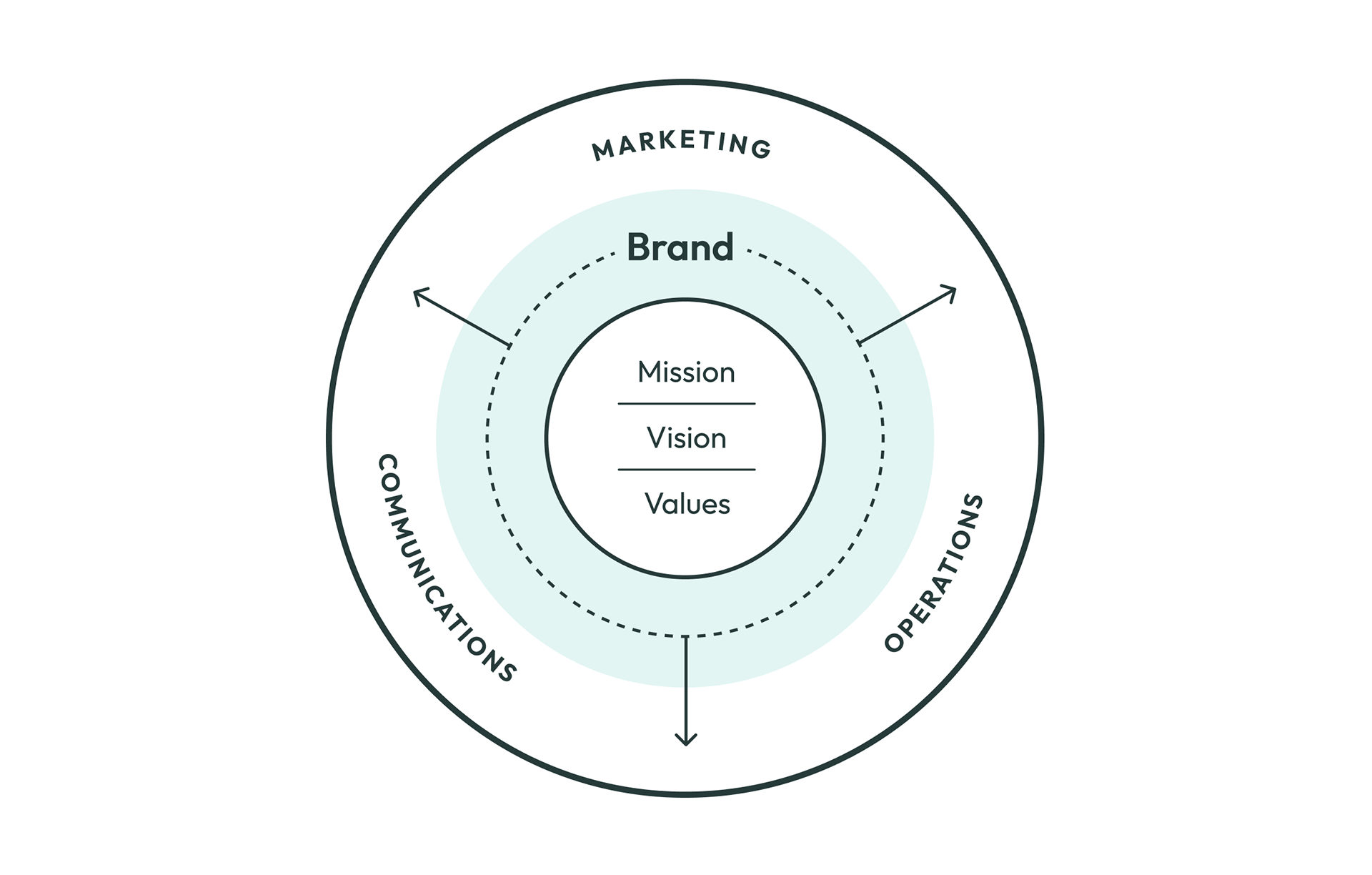
The Why
We’re a strategy-driven firm. For us, that means that we need to understand what our client is trying to achieve with their project, what it’s trying to say, and to whom it’s trying to say it. And we’d also like to understand larger communications and business goals of the organization so we can weave those themes into the work.
Oftentimes, these pivotal questions will bring to light differences of opinion. And some of the most important things to unearth during a brand workshop are any differences of perspective that might exist within a team. This is the place to tease those differences out in order to get a more complete and aligned view of a brand. Only then can we be as accurate as possible and, as designers, solve the problem.
While we may call it a workshop, this is really, at its core, an in-depth discussion between our teams. We’re here to set the table for this important conversation, facilitate sometimes difficult discussions, and, ultimately, to listen carefully.
The Who
Because we’re looking for core information about strategic direction, it’s crucial that we gather senior leadership in the brand workshop. Ideally, we invite between five and eight people, though we sometimes work with bigger groups. They might be C-level execs, board members, directors of different departments, and marcomm folks — anyone who has insight into where things have been and a key stake in where they’re going.
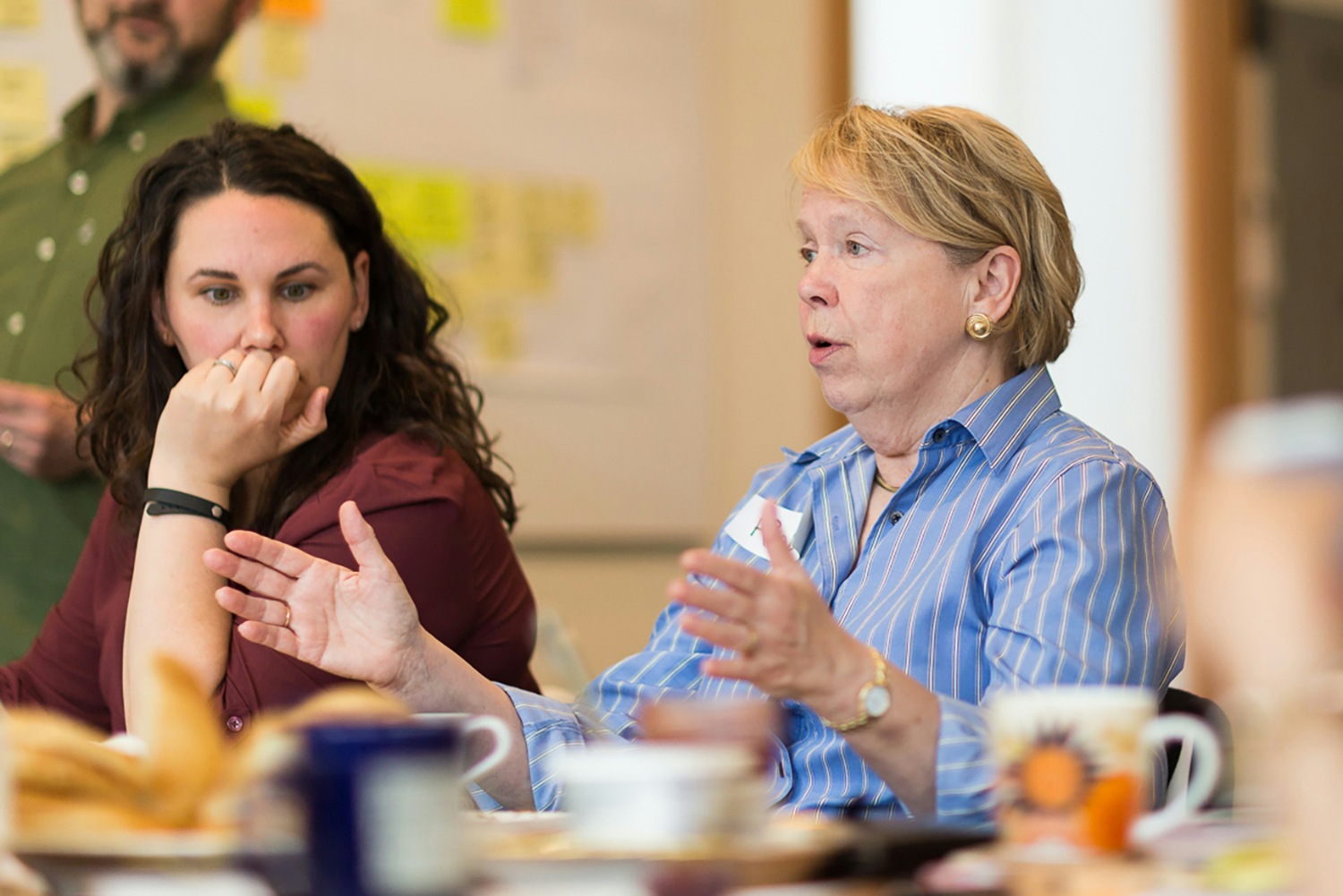
In a larger organization, we often split this up into multiple workshops — perhaps one for the leadership and board level, and one that spans multiple levels of management and staff. Regardless, it’s important that the group attending represents a varied cross-functional slice of the organization, everyone who has a strong stake in the brand and messaging.
The What
Mission, vision, values
We kick things off by talking about what’s at the core of any brand: mission, vision, and values. We ask what’s behind them and how stable they are. We want to find out how deeply embedded they are in the organization’s work and how baked they are into their branding and messaging.
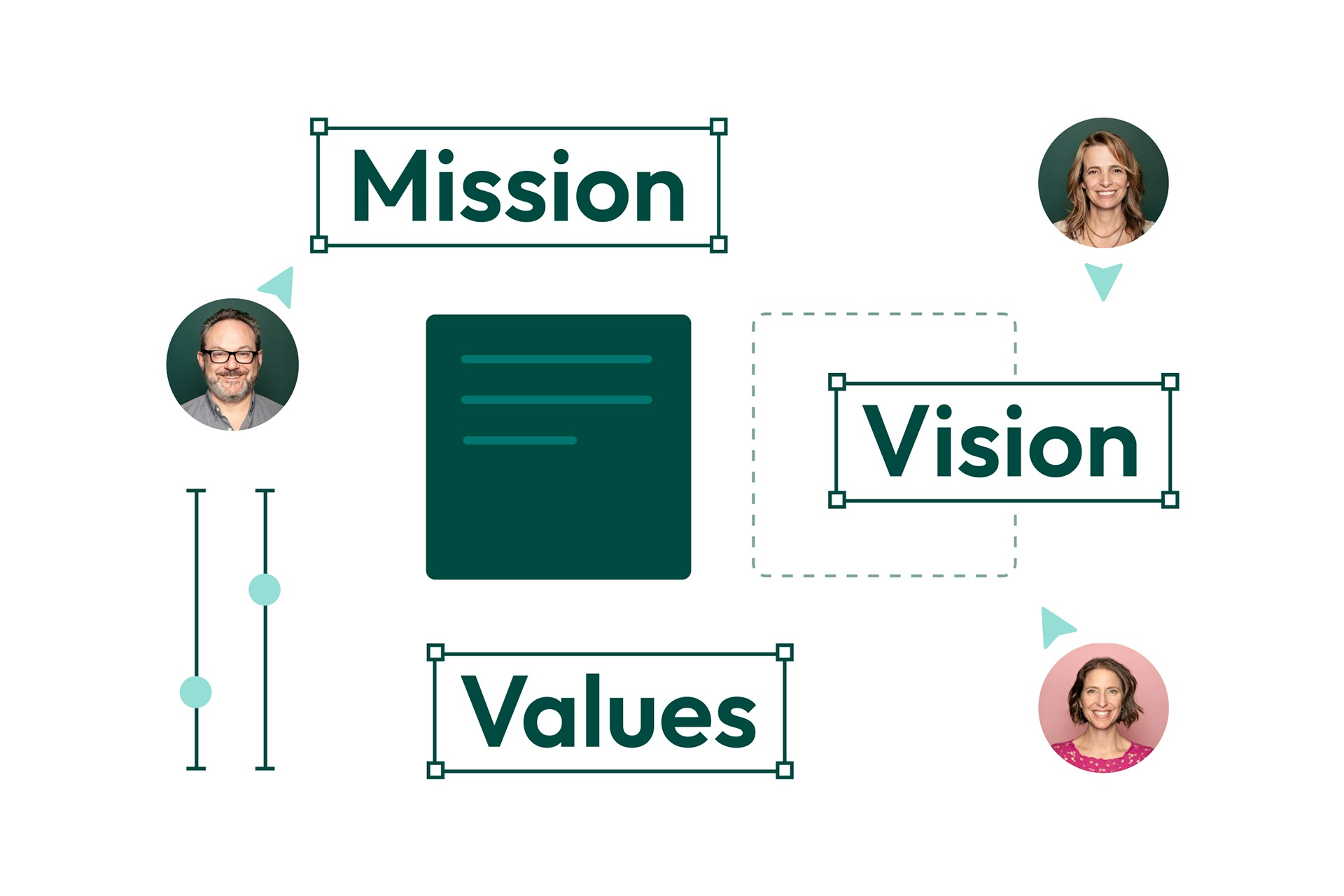
Project Goals
Next, we ask about the goals of the project. We start with what we learned during the proposal process, early conversations, and our audits and materials review, and build on that. The question of why we’re doing the project is a complex one, and this is often a fascinating conversation: Has the organization changed fundamentally? Are they looking to connect more deeply with their audiences? Are they looking to increase donations or sales? Are they looking to spread ideas? Is there a hierarchy of goals?
What's going well, and not so well
Now that we have a good basis for the strategic direction of the organization and where we want to get to with the project, we talk about what’s currently going well — and what’s not going well — about the current brand or website. This is why it’s important to have people in different departments. Often we get a variety of answers depending on perspective.
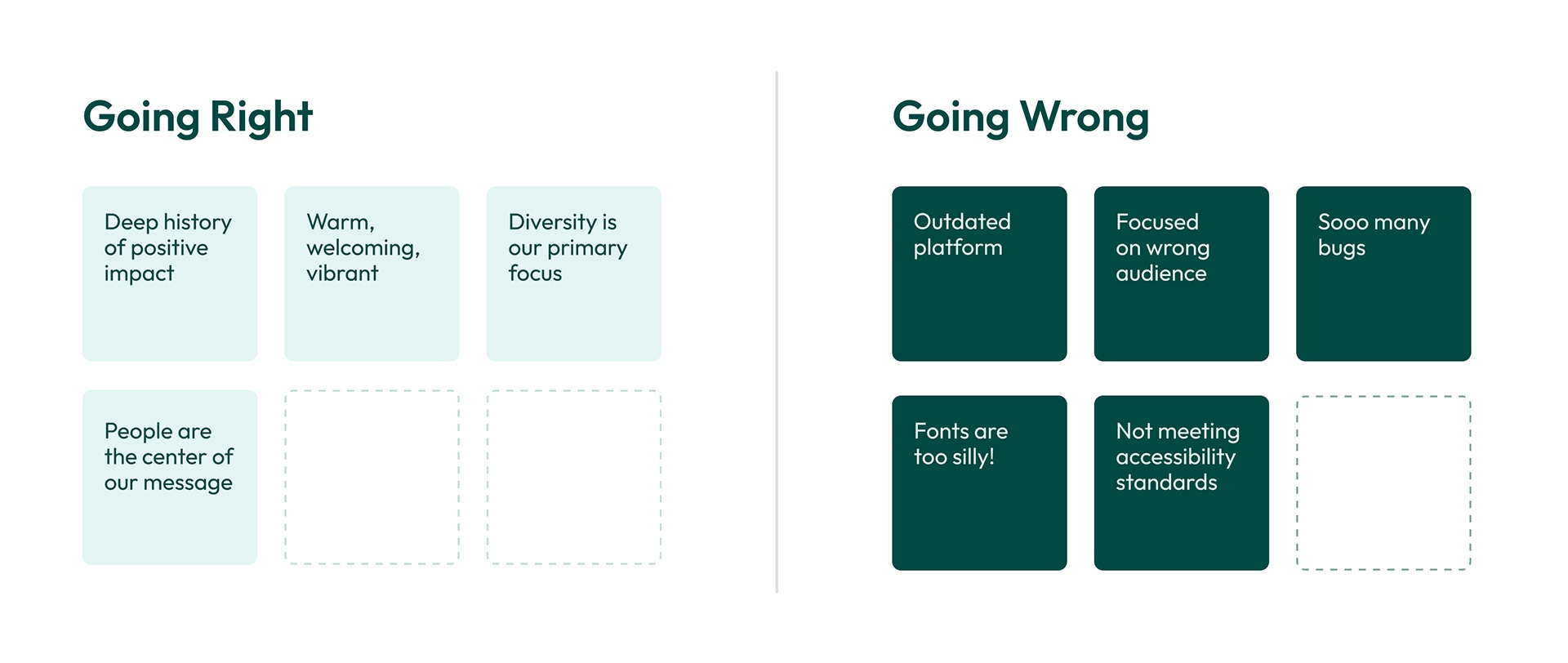
Audiences
From there the focus turns to audiences, and we spend a lot of time here. We’re looking to tap into institutional knowledge and get a baseline for assumptions that organizations might make. We try to be as empathic as possible. For example, when a prospective customer comes to your website, what hopes and positive thoughts might they be having? What fears and apprehensions? What do you want them to do? What are the takeaways you want them to have when they leave? This is a critical part of the equation when we get to design. The organization has its goals, but those need to be triangulated with what their audiences really want and need from them. It’s easy for an organization to get really caught up in their own desired outcomes in a design process. But clear articulation of audience needs from the start can save an organization from itself by reminding us of those we serve.
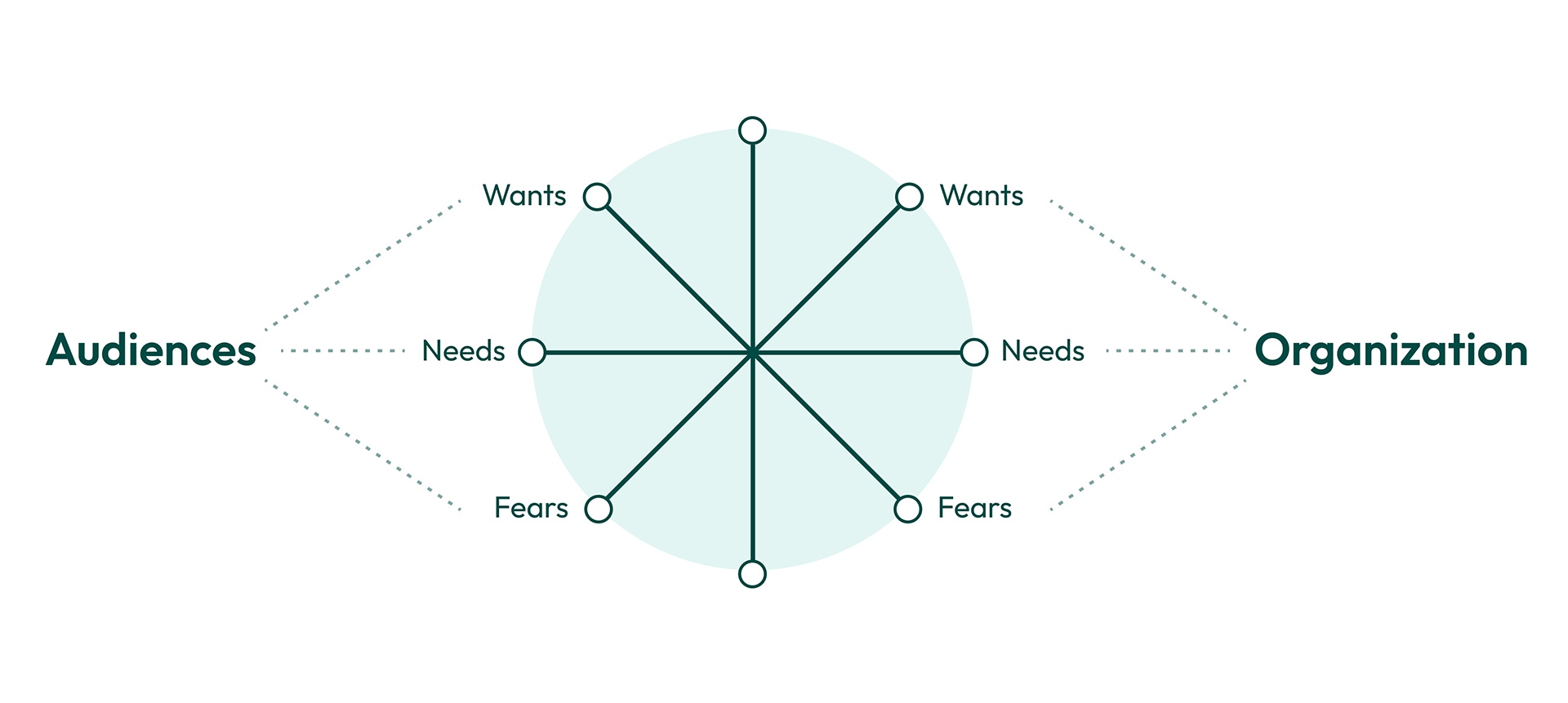
Brand Personality
For the rest of the workshop, we cover brand personality by asking people to do a couple of exercises — one verbal and one visual — that helps us identify the authentic and aspirational style. It’s important to ask them to be real and honest about who they are, but also to express what’s best about them.
The How
Pre-pandemic, most of our workshops were in-person, with big Post-It wall stickies and Post-It notes and Sharpies and dot stickers. We loved getting people up out of their seats and voting with their feet, talking amongst themselves, and exploring ideas together in a room.

Most of our workshops these days are done via Zoom. We typically use Miro or Figma, both of which let us have a big canvas where we can replicate the experience of putting up notes. Everyone is anchored to their seats, but it works very well.
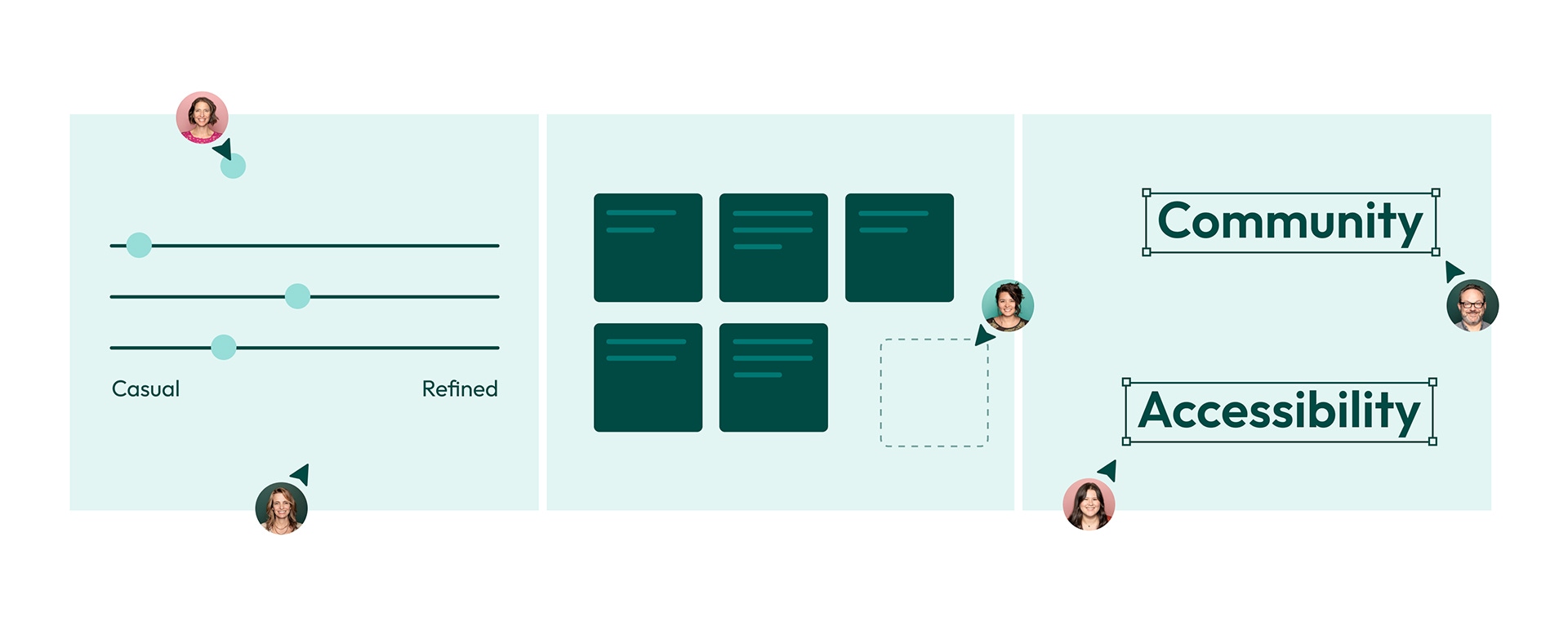
No matter the venue, virtual or IRL, we try to make these lively conversations. One of the other reasons to have a slightly smaller group is to make sure that everyone speaks. We try to create an experience that lowers inhibitions and makes everyone feel relaxed. Good thing that we’re delightful, welcoming people.
Where We Head Next
Often, we run out of time in our brand workshops for getting to the bottom of all things audience, so in those instances we put everything we learned from the workshop into a spreadsheet and ask clients to provide more information offline. And because audience insights are so important, if there’s budget and time in the schedule, we will conduct interviews and do surveys to test assumptions and make sure the data is accurate.
Then we take everything we learned during discovery and roll it into a strategy that’s always stronger because of the brand workshop.
If you have questions, or want to talk more about our tools or approach, please get in touch. We’re always open to share and talk.